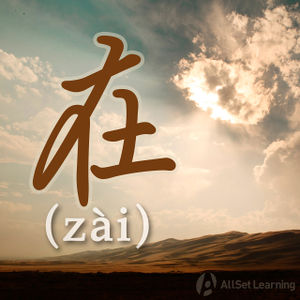Expressing actions in progress with "zai"
-
Level
-
Similar to
-
Used for
-
Keywords
在 (zài) and 正在 (zhèngzài) can be used as an auxiliary verb to express that an action is ongoing or in progress. This is often the equivalent of present continuous in English. 正在 (zhèngzài) emphasizes ongoing or in progress of an action a bit more than 在 (zài)。
Structure
Subject + 在 + Verb + Object
or
Subject + 正在 + Verb + Object
Examples
- 她 在 看 书。She is reading.
- 我们 正在 吃 饭。We are eating.
- 我 在 喝 啤酒。I am drinking beer.
- 他 现在 在 开会,没 有 时间 见 你。He is currently in a meeting, he doesn't have time to see you.
- 我 在 上网。I am surfing the internet.
- 我 现在 在 上班。I am currently at work.
- 我们 正在 上课,请 你 等 一会儿。We are in class, please wait a moment.
- 我 妈妈 正在 做 饭。My mom is preparing a meal.
- 十 点 的时候,她 正在 看 电影。When it was ten o'clock, she was watching a movie.
- 你 给 我 打电话 的时候,我 正在 跟 朋友 喝酒。When he called me, I was with friends drinking alcohol.
There is no need to worry too much about when to use 在 or 正在, since they basically mean the same. 正在 usually shows that the action is in progress. 在+verb is more common to use than 正在+verb, but both are okay to use. As mentioned, the only small difference is that 正在 emphasizes that the action is happening now. In many cases you can even leave these words out, so instead of saying: "我在看书。" you say: "我看书。"
See also
- Aspect particle "zhe"
- Expressing actions in progress (full form) (more advanced usage)
Sources and further reading
Books
- Basic Patterns of Chinese Grammar (pp. 41-2) →buy
- Chinese: An Essential Grammar, Second Edition (pp. 60-1) →buy
- Integrated Chinese: Level 1, Part 1 (3rd ed) (pp. 209-10) →buy
- New Practical Chinese Reader 2 (新实用汉语课本2) (pp. 218-9) →buy



